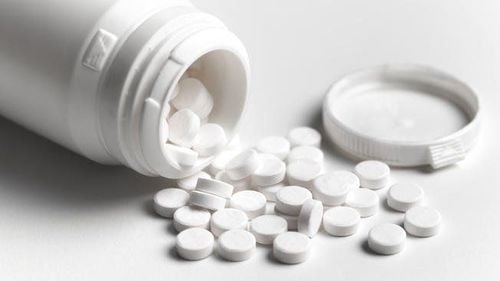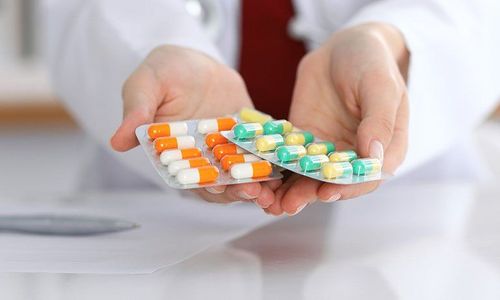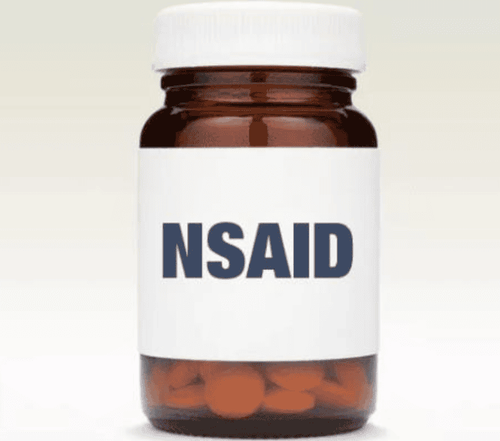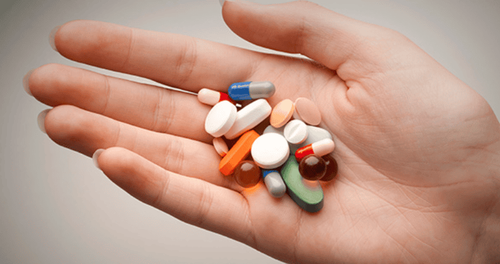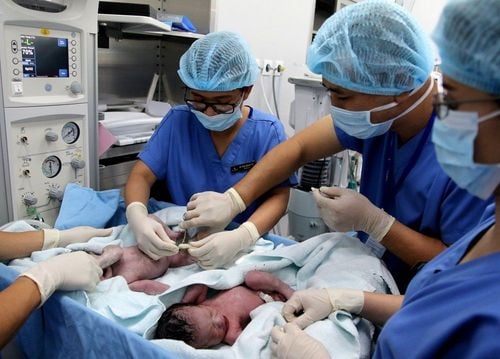This is an automatically translated article.
It is almost always inevitable for women to experience pain in the uterus after giving birth, the pain is formed due to uterine contractions with the aim of pushing out excess tissue and blood. You can manage postpartum pain with gentle activities, a reasonable diet and rest, or you can take pain relievers prescribed by your doctor for uncontrolled pain or pain after surgery. catch the child.1. Uterine pain after giving birth
The uterus of a pregnant woman will expand with each stage of fetal development. After giving birth, the uterus begins to shrink to return to its original size, at which point there will be abdominal pain caused by uterine contractions called postpartum labor pain. Uterine contractions are responsible for pushing out the extra blood and tissue, or fluid, that remains in the uterus and genital tract. Depending on the body of each person, postpartum uterine pain will last for about 2 to 3 days or sometimes last for a whole week, the pain is most intense on the first 2 days after birth and gradually decreases on the 3rd day. Feeling a lot of pain is due to strong contractions that help the uterus decrease in size faster, the abdomen is also more compact, quickly regaining shape.2. Causes of postpartum pain in the womb
There are two main causes of postpartum pain. The first is because the mother's uterus continues to contract to push the fluid out to return to its original state after the baby is born. The second is because the uterus contracts more, the pain is more intense when the mother breastfeeds.3. Medicines for pain in the womb
3.1. Uterine pain due to vaginal birth Without a doctor's prescription, women after giving birth should not arbitrarily use pain relievers because they may affect the quality of breast milk or experience unwanted side effects. At this time, it is possible to apply some methods of reducing uterine pain derived from traditional experience, which are equally effective.3.2. Painkillers after cesarean section On the other hand, women who give birth often have to endure terrible labor pain and women who have had a caesarean section also struggle with the pain of the incision after the anesthetic wears off. After the cesarean section, you will be asked to stay in the observation hospital for 5 to 7 days. In addition to prescribing antibiotics, your obstetrician may also give you pain medication during this time. The pain of the incision being healed, combined with the contraction of the uterus to return to its original state, can be exhausting. Your doctor may consider prescribing pain medication after a cesarean section if the pain is too much to bear. Taking pain relievers is essential and is also very safe, without affecting breastfeeding, such as ibuprofen.
Treatment with opioid pain relievers will vary from person to person. NSAIDs can be added to reduce opioid intake if there are no contraindications. Calculating based on the level of pain after labor, the pain medications commonly used by doctors are as follows:
For mild pain, paracetamol can be used. Mild-moderate pain can be used use paracetamol in combination with mild opioids including codeine, dihydrocodeine Moderate-severe pain can use paracetamol, NSAID and mild opioid codeine, dihydrocodeine In severe pain, can use NSAID and opioid NSAIDs and morphine can be used depending on the patient. When the patient is in extreme pain, an opioid epidural and local anesthetic can be administered
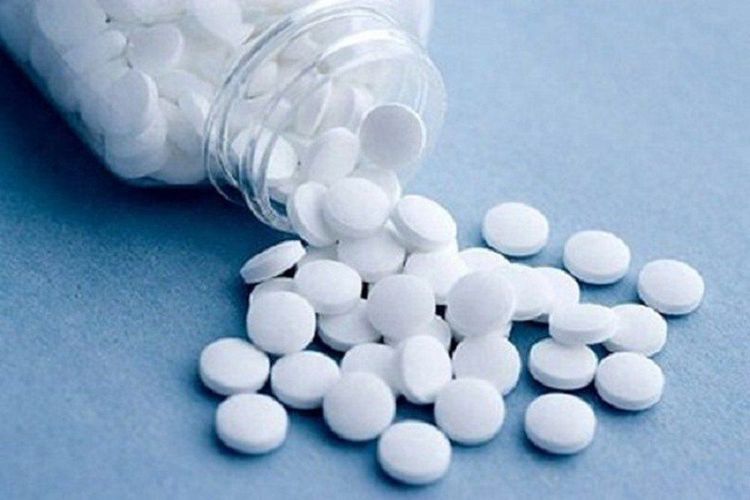
Thuốc giảm đau dạ con chỉ dùng khi có chỉ định của bác sĩ
4. How to reduce postpartum pain without drugs
However, in some cases, pain relievers for spasms will produce undesirable side effects such as nausea or gastrointestinal bleeding. With these signs, the mother can eat dishes such as roasted turmeric chicken, green papaya stewed beef tendon, grilled chicken gizzards, ginger tea to relieve postpartum labor pains or try applying pain relief and control methods. Natural pain control below:4.1. Breastfeeding When breastfeeding, it will stimulate the release of the hormone oxytocin, which helps the uterus contract quickly, preventing blood loss, effectively reducing labor pain, and quickly regaining shape. In addition, when breastfeeding, babies can access breast milk early and the amount of breast milk is also maintained stable from the beginning.
4.2. Regular urination Women after giving birth should drink a lot of water and try to empty the bladder by urinating regularly, do not hold urine to improve uterine pain, especially to get rid of the amount of fluid. from the mother's body more quickly. Postpartum women absolutely must not hold urine when abdominal pain is easy to lead to bleeding or inflammation, postpartum bladder infection
4.3. Massage the lower abdomen When having labor pain, relatives can massage the mother's abdomen to relieve and support to push the product out, pay attention to rub around the hard position until it feels soft to help reduce pain significantly. Do not apply heat to the abdomen at this time to relieve pain, it will make it difficult for the uterus to contract, even causing dangerous bleeding.
4.4. Changing positions and exercising while lying down In the case of a normal delivery, the mother can lie on her stomach gently on a pillow under her abdomen to relieve pain immediately. In case of caesarean section, the mother should often turn the lying position so that it is as comfortable as possible, and quickly practice walking or gentle movement to avoid intestinal adhesions or urinary retention. Mothers should also exercise to move the pelvic floor and abdominal wall muscles so that the pelvic floor muscles and ligaments are better elastic, avoiding the prolapse of the uterus, bladder, rectum, also known as posterior pelvic organ prolapse. born.
4.5. Meditating After giving birth, the mother who practices meditation also helps the uterus to contract faster and reduce labor pains, breathe slowly and deeply when the pain occurs. Should pay attention to alternating sitting meditation and lying down to limit back pain, shoulder pain.
Please dial HOTLINE for more information or register for an appointment HERE. Download MyVinmec app to make appointments faster and to manage your bookings easily.





